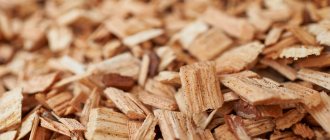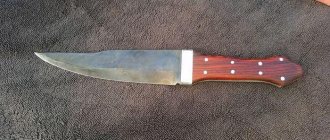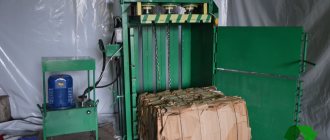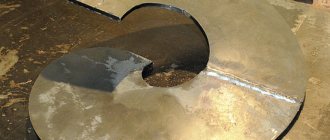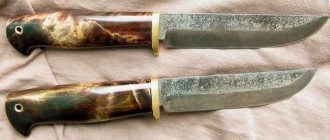Firewood or coal are not available fuels everywhere, but waste from the wood processing industry or agriculture can be found, perhaps, everywhere. It has long been noted that they burn, perhaps a little worse, but they can be used for heating. Just adding sawdust or straw is very inconvenient. Therefore, they came up with the idea of processing them and pressing them into briquettes or pellets. There are even special boilers for fuel granules - pellets. If the fuel is good, they are serviced (the ash is removed) once a month. The best news is that it is quite possible to make pellets with your own hands. This will require quite a lot of equipment, but the basis is a granulator (extruder or pelletizer). There is no way without him.
What are pellets and what types are they?
Pellets are fuel granules that are made from waste from the wood processing industry, some crop residues (straw, sunflower husks, buckwheat, etc.) and even from chicken droppings. Their production technology is such that no additives or binders are required. That is, it is absolutely safe and 100% natural fuel, which is also made from waste.
Pellets are a good fuel
Since the raw materials for fuel pellets can be different, the characteristics of the fuel are different. Pellets are divided into three categories:
- White. This is a premium fuel with the highest performance (and price). So named for its characteristic color - light yellow, almost white. But color is secondary, characteristics are primary and the main thing is very low ash content. After the combustion of white ash pellets, no more than 0.5% of the fuel volume remains. The boiler will need to be cleaned very rarely. White fuel granules are obtained from shavings without bark and other foreign inclusions. As a rule, this is carpentry or furniture production.
- Gray. Raw materials for this type of pellets may contain a certain percentage of bark, pine needles and some other impurities. But the ash content should not be more than 1.5%.
- Industrial or dark pellets. This type of fuel pellets is made from straw or cake in its pure form or with the addition of wood waste. The ash content of this type of fuel is much higher than those described above, however, it cannot be higher than 5%.
White and gray pellets are used for individual heating. They are also called “first class” or first-cash. They have a diameter of 6-8 mm, a density of approximately 600 kg/m3, and the amount of heat generated is about 4.7 kW/h. They are burned in special boilers, which are called pellet boilers. Typically, this equipment is very demanding on fuel quality. In addition to low ash content, there are requirements for the integrity of the granules and the absence of a dust fraction. Otherwise, the pellet boiler burner becomes clogged and the boiler shuts down. Industrial pellets are also burned in special furnaces, but they have a completely different structure and much larger volumes.
Characteristics of pellets from different raw materials
In principle, any pellets can be poured into solid fuel boilers, only they are usually used at the smoldering stage. When the oven is already preheated, add a certain amount of granules.
Where can I get the equipment?
If you already have dry chips, and equipment for drying these chips, a hammer crusher and a lot of raw materials, then it’s time to think about your machine or, as it is often called, a granulator.
Of course, it’s better to buy it; buying such a unit has its advantages:
- With purchased high-quality equipment, the technological accuracy will be more precise, and, accordingly, the service life will be longer;
- Not always, but for purchased equipment, when a component is released, you can quickly order a spare part;
- If you don’t know something, you can easily find useful information about these types of granulators on forums on the Internet, or, as a last resort, contact the manufacturer for information.
You can buy small-capacity granulators here.
Production technology
For any owner, the idea of turning waste into fuel, or even making money from it, is attractive. In principle, it is possible to make pellets with your own hands, but you should not expect industrial quality from them. It is unlikely that you will be able to make an imported pellet boiler using homemade pellets work, but a homemade or solid fuel unit does an excellent job with them.
Equipment necessary for the production of pellets from sawdust or wood chips
The wood pellet production technology consists of several successive stages:
- Large crushing of raw materials. Fragments should be no more than 1.25 cm3. This is preparation for better drying. For this operation you need a crusher.
- Drying in a drying chamber. The raw materials are brought to a moisture content of 8-12%. There are different types of chambers, some use direct heating (hot air from the firebox is supplied to the drying chamber), others heat the heat exchanger, and from it the air in the dryer is heated. The second option is less effective, but in this case the possibility of soot getting into the raw materials is excluded. Even a small amount of soot can stain wood chips. As a result, the quality of the pellets can be classified as “white” (if the appropriate raw materials were used), and the color – gray.
- Fine crushing. The dried wood is fed into crushers (usually hammer type). The resulting wood fragments measure more than 1.5 mm for white and gray pellets, and 4 mm for industrial ones.
- Hydration. Wood fibers with low moisture content will not be able to stick together. That's why they are moisturized. If pine or spruce waste is used, water is injected. Raw materials from hardwoods - oak, birch, beech - are processed with hot steam.
- Pressing. There are presses of different designs working here. The raw material is pressed through a matrix (flat or round), which forms cylinders of given sizes.
- Cooling. Under the influence of high pressure, pellets heat up to 70-90°C. In this state they crumble easily, so they are left to cool.
- The finished granules are sifted (from the remnants of non-glued particles) and packaged.
As you can see, the process is multi-stage and requires quite a large amount of equipment. However, if cheap or free raw materials are available, it is profitable to make pellets yourself.
Features of straw pellet production
Making pellets from straw is easier. It initially comes dry, so there is no drying stage. If there is wet straw, it is dried naturally in the sun, and then crushed and mixed with dry straw, thereby achieving the required moisture content of the raw material before pressing.
Grinding is also easier. This requires a straw cutter, which immediately cuts the raw material into fragments of the required length. So the grinding also takes place in one go. After bringing the mass to the required humidity, it is pressed through a press. And here everything is simpler: since the raw materials are softer, less effort is required. Less powerful equipment means lower costs. At the same time, the line productivity can be high.
As you can see, less equipment is required for the production of straw pellets, and less time and energy is also required.
Advice from professionals
Gearbox manufacturing
To make a granulator, you can use a homemade gearbox. One of the common manufacturing options: rear axle from heavy Ural or Dnepr motorcycles. The subordinate ratio of this element is 4.62, it is compact, so it can be placed vertically.
You can connect the engine to the gearbox using a cardan or an elastic coupling from the same motorcycles. The drive gear has a splined shank onto which a cardan or elastic coupling can be mounted.
Recommendations for making a matrix
It is very important to select a matrix disk taking into account possible performance. For example, when producing 300 kilograms of feed at home in 60 minutes, you need to use a matrix with a diameter of 50 centimeters! And the power of the electric motor should be 25 kW
For example, when producing 300 kilograms of feed at home in 60 minutes, you need to use a matrix with a diameter of 50 centimeters! And the power of the electric motor should be 25 kW.
The optimal diameter is considered to be 25-30 centimeters.
Homemade granulators
Although a lot of equipment is required for the production of pellets, the main device is a granulator. With its help, pellets are formed from raw materials. There are several models of granulators:
- Screw. The structure is similar to a household meat grinder. The same screw shaft and matrix - a grid through which raw materials are pressed. They can be used for soft materials such as straw. It doesn’t “pull” wood, even well-chopped wood—it doesn’t have enough effort. In principle, if the parts are strong enough, you can install a more powerful motor.
Schematic diagram of a screw extruder (granulator) - With a flat matrix. There is a metal circle in which holes of the required diameter are made (usually 3-4 mm). There are toothed rollers that force the raw materials through the holes, forming granules.
Design of the main unit of a granulator with a flat matrix - With a round matrix. The idea is the same, only the matrix is made in the form of a ring, so the rollers are located in a different plane. This option has greater productivity, but granulators of this type are rarely made by hand.
Structure of a granulator with a cylindrical matrix
The simplest screw extruder in structure. It is often made for pressing feed, but can also be used to make fuel pellets from soft raw materials. If you need to make equipment for the production of pellets, this is the easiest option. Provided you know how to operate a lathe and welding machine.
Homemade screw granulator
As with any equipment of this type, the screw granulator has a matrix. In this case, it is similar to the mesh of a meat grinder, only it is made of a much thicker plate. The second important unit is the screw shaft. All these details can be made with your own hands. How to describe it in words is useless, watch the video.
Making a matrix for a finished screw.
The screw and matrix are “packed” into a housing or sleeve. How to make it, see in the next video.
After assembling the main unit, you need to install a motor with a gearbox and a hopper into which chopped straw will be supplied. You can run it.
How to make a flat die granulator
First you need to understand how it works. Everything is perfectly demonstrated in the video.
Flat die pelletizer device
The next video contains fairly detailed explanations of the process of making the matrix and rollers.
We make it at home
But if this is not possible, but the desire to have it is great, then you can make your own sample, which will have the following advantages:
- You can make it as productive as you want;
- You can easily design it for yourself, taking into account your wishes for its location and size;
- After production, you will know the equipment from A to Z, all its strengths and weaknesses, this will facilitate its operation;
- You can make most of the spare parts for it yourself, without depending on suppliers.
What skills are needed to assemble it:
- Locksmiths, you must be well versed in locksmithing, or in extreme cases, call a good locksmith to help you;
- Gas and electric welding skills;
- Turning skills.
What you need for making:
- A welding machine with more than one pack of electrodes;
- A cutter with a cylinder of propane and oxygen (not necessary, but recommended, this way you will reduce the time for some operations);
- Lathe;
- Drilling stationary machine;
- Drills 6, 8 or 10 mm, depending on the diameter of the pellets you want to produce;
- Sheet metal from 40 mm thick;
- Metal, it is better if you have access to some old and large scrap metal dump;
- Pipe for the granulator body, metal thickness can be from 3 mm, diameter from 50 cm, depending on your wishes. Such pipes can be found in old boiler rooms that were used as chimneys;
- Bearings;
- Electric motor, for a granulator 400 kg/hour, a motor of 1500 rpm and 22 kW power is suitable for us;
- Worm gear;
- Pulleys or metal to turn them out;
- You need a network to connect and operate the 380 Volt machine.
Advantages of fuel pellets
Pellets are used for heating both the private sector and apartment buildings. Moreover, some industrial enterprises have installed special boilers for burning fuel pellets. Such objects save considerable amounts by heating with inexpensive but effective granulated fuel.
Pellet production as a business is considered a very profitable enterprise due to the advantages of an alternative heat source:
- high heat transfer;
- compactness of granular fuel;
- fire safety due to lack of susceptibility to spontaneous combustion;
- non-toxic, no harmful impurities in the granules;
- the volume of carbon dioxide released during combustion is much less than that of coal;
- low cost;
- low consumption.
The advantages of using granules also include ease of transportation.
Why use a pellet burner
Pellets are a material for the firebox. We are not talking about ordinary pallets for transportation. Burner pellets are compressed wood in the form of small cylinders. Their diameter reaches 25 mm. They successfully broke into the market and continue to conquer it. People who have used such fuel note its high quality and use only it.
However, if pellets are the same wood that is loaded into the firebox, why waste money and effort on creating an additional mechanism? Although this is logical, in this case the solid fuel material will burn by 80 and even 40%. The remains are simply disposed of. As a result, the efficiency of such a furnace decreases significantly. If you use a burner, the combustion of the material will be 98%. The difference is significant.
Note! Pellets are not suitable for pyrolysis boilers. During operation, they cause harm to it, and the equipment has to be serviced more often
It is also important that the temperature inside the burner as the pellets burn reaches 1 thousand degrees Celsius! That's why it's worth considering whether you can install a pellet burner for your boiler
This is quite rational if you understand the principle of operation of the pellet burner during assembly and also follow the instructions. Then the burner will be an excellent addition to the boiler, improving its efficiency. The video shows a pellet burner and the principle of its operation.
The main task of the burner device is to organize a powerful torch that will heat the boiler. A pellet burner is used for the same thing and consists of a small combustion chamber in the form of a wind tunnel. Pellets are fed into it from a hopper. Under the influence of air flow, a directed flame is formed. The combustion chamber is made rectangular or round. The outer part consists of a screw conveyor. Fuel from the bunker is supplied through the inlet pipe. The next indispensable element is the fan. It will supply air to the bottom of the chamber.
The principle of operation is as follows: pellets fall into a chamber where they are set on fire. The fan turns on, supplying a minimum amount of air. As the flame gets hotter, the fan spins faster, pumping in more air. The result is an even and powerful torch. Factory burner devices are fully automated. The pellet burner controller allows you to regulate the supply of pellets, air, etc.
Sizing
It is very important to determine the size of the future apparatus before starting to manufacture a granulator from a meat grinder. In total, the following indicators need to be measured:
In total, the following indicators need to be measured:
grid parameters (frequency and cell diameter);
It is best to use standard drawings to make a household feed granulator quickly and without lengthy calculations of the correct dimensions. The drawings were drawn up by professionals, so you don’t have to worry about the success of manufacturing the device.
So, for example, the diameter of the case should be 54 millimeters, and the main dimensions are selected in proportion to the radius of the internal shaft, which is 11-13 millimeters.
What is the technological process for making pellets?
In the woodworking industry, a lot of wood waste remains after work, which has been uselessly disposed of for a long time. Now technology allows even ordinary sawdust to be used in production. The production of pellets has a simple principle - wood waste is compressed in the form of bags or granules. But before this, the material is crushed in a special crusher.
There are now special stoves for fuel pellets, which are cleaned only once a month, and chimneys with exhaust do not harm the environment.
The sawdust pressing itself takes a short amount of time, but producing pellets at home is a long and complex process.
Gravity type devices
Gravity-type burners may not depend on electricity. The fuel enters directly into the pyrolysis chamber; pressurization can be provided thanks to the chimney draft. You can put the burner into operation manually, using one damper and a draft regulator in the chimney. But this type of device requires serious maintenance.
Non-volatile manually controlled products are only homemade. Only gravity-driven semi-automatic designs are available for sale, where fuel is supplied by means of a “self-dumper”.
To prevent fire from entering the bunker, you need to install a gateway based on elements that expand when heated, or use a double-grate design. It is movable and periodically moves back, picking up some of the pellets and transferring them to the combustion zone, while at the same time the ash is pushed into the ash pit. But there is a risk that the gap between the grates can quickly become clogged with ash. If the grate gets stuck in the rear position, fire may enter the hopper.
The diagram of a gravity-independent energy-independent burner is as follows:
- Sawdust is poured directly into the pyrolysis chamber in the form of a perforated steel basket. It is removable; a new one needs to be made for each pellet size.
- Tertiary air, which is sucked through special holes, prevents fire from entering the bunker.
- Pyrolysis of sawdust in the basket is carried out using primary air.
- In its secondary form, it enters the chamber together with gases, where combustion takes place.
- A torch of gases comes out of it.
Some factory-type burners can also be manufactured according to this design. But, unlike homemade products, they will still depend on electricity, since they have built-in automation.

